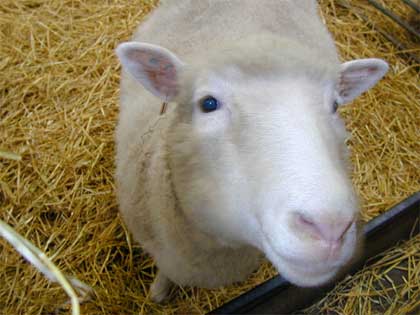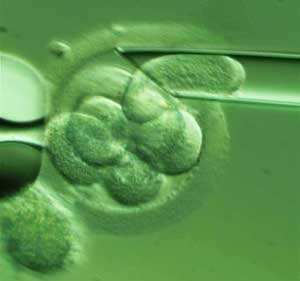The human war after the birth of Dolly
July 5 marks 10 years since Dolly sheep was born in Scotland, causing global shock when it became the first cloned animal.
She also sparked a series of hopes, fears and a moral battle that has not yet fallen.

Dolly Sheep (Photo: edge.org)
The question is what scientists have achieved from the creation of Dolly.
"Where did Dolly take us?" , Dr Sue Mayer, a member of the GeneWatch Association, UK. "The biggest concern is that she brought us into a dead end."
"Instead of finding the root cause of the disease, we are following quick and exaggerated treatments that may never work . "
"And she opened a new angle in asexual reproduction, a way that scientists are trying to open up while we really should close it."

Somatic cell nuclear transfer method - Photo: sut.ac
The method that led to the birth of Dolly is called somatic cell nuclear transfer , which has barely changed in the last decade, whereby an egg is removed and its nucleus - pine DNA messages that make up life - are removed.
This nucleus will be replaced through a test tube with a nucleus of cells taken from the cloned animal. This reconstructed egg will be placed in a plate containing chemicals to separate. A few days later it becomes a group of cells large enough to be implanted in the adoptive mother's uterus.
Dolly, born from the Roslin Institute in Edinburgh, was named from Dolly Parton, a country singer with huge breasts, because the cell is cloned from the mammary gland of a sheep.
Its laboratory name is 6LL3. It was later learned that the same group, led by Ian Wilmut, created two sheep from embryonic cells.
So correctly, Dolly is the first mammal to be successfully cloned from an adult cell.
After this breakthrough, a series of other cloned animals were born: horses, bulls, pigs, mice, rabbits, cats, dogs .
But the rate of egg failure is also quite high, and among the successful embryos there are many errors, as Dolly's case was prematurely dead, a clear demonstration for any scientist planning to find a way. baby cloning.
The reason is that the gene software is not completely transferred or damaged during transfer. As a result, the faulty machine works - the gene doesn't turn on or off as it needs to do in the complex process of making proteins.
So if such duplication is complex, expensive and risky, why do people bother? The reason for attraction is to serve medicine.
A laboratory animal such as a mouse can become a powerful tool for experiments. And a farm animal can be modified and cloned to produce rare milk proteins - Dolly sheep was created for that purpose.
But the biggest reward is to clone embryonic stem cells, the original cells of the embryo that are capable of developing into any tissue in the body.
Researchers believe that embryonic stem cells will one day become tissue regenerating brain cells, nerves, liver, kidneys and other organs damaged by disease. So if these stem cells are the patient's own DNA version, they will not be eliminated by the immune system.
At this point, cloning of embryonic stem cells for patients is still far away. The only scientist who claimed to be successful was South Korea's Hwang Woo-Suk but was revealed to be a fraud in January this year.
Many countries have enacted laws on cloning issues after Rael's sect declared in 2002 that it created the first cloned child. This statement has yet to be validated and most scientists doubt it. However, many people speculate that it was only a matter of time before the first human being was born.
MT
- Dolly Sheep 'revived'
- 6 post-sheep cloning Dolly
- July 5: Dolly Sheep, the first cloned animal in the world was born
- Dolly sheep abandoned the asexual reproduction study
- Persistent controversy after 20 years of cloning application
- The scientist who created Dolly has just died
- History of ups and downs of birth control pills
- Reveal the fate of 4 Dolly sheep cloned
- Date of birth affects each person's fate?
- Human brain grows fastest right after birth
- Year of birth, affect human development?
- Caesarean birth can affect human evolution
 Why do potatoes have eyes?
Why do potatoes have eyes? 'Tragedy' the world's largest carnivorous life: Death becomes ... public toilet
'Tragedy' the world's largest carnivorous life: Death becomes ... public toilet Tomatoes were once considered 'poisonous' for 200 years
Tomatoes were once considered 'poisonous' for 200 years Detecting microscopic parasites on human face
Detecting microscopic parasites on human face